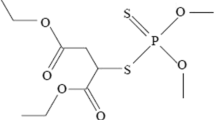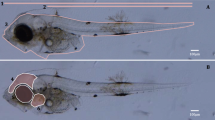Between 1987–88 and 1989–90, 18 Sarus cranes (Grus antigone), more than 50 collared doves (Streptopelia decaocto) and a few blue rock pigeons (Columba livia) were found dead during winter in Keoladeo National Park, Bharatpur, which coincided with the application of aldrin in the crop fields around the Park. Brain tissue of Sarus cranes, collared doves and blue rock pigeons contained an average of 19.33 (3.56–43.46), 15.19 (7.40–20.70), and 20.42 (14.61–26.23) ppm, wet weight, of dieldrin, respectively. Dieldrin in other tissues ranged from 0.78 ppm to 92.26 ppm in Sarus cranes, 3.44 ppm to 66.17 ppm in collared doves and 16.92 ppm to 20.99 ppm in blue rock pigeons. Residues of aldrin were as high as 89.75 ppm in the gastrointestinal tract of a Sarus crane and 104.00 ppm in a collared dove. Very high residues of aldrin in the gastrointestinal tract, and dieldrin at much higher quantities in the brain than the lethal level (4–5 ppm) clearly indicate that dieldrin, after being metabolized from aldrin, was responsible for the deaths. A decline in the breeding population of Sarus cranes in Keoladeo National Park has been noticed, and is suspected to be an indication of its general population trend. The Registration Committee under the Indian Insecticide Act of 1968 has decided to include aldrin in the banned list with the ban taking effect from January 1994.
Similar content being viewed by others
References
Babcock K.M. and Flickinger E.L. (1977) Dieldrin mortality of Lesser Snow Geese in Missouri. J. Wildlife Manag. 41, 100–103.
Bauder R.B., Weishuhu L.L., Frels D.B. and Carroll B.K. (1972) Geese and Pesticides. Texas Parks Wildlife 30, 20–22.
Blus L.J. (1982) Further interpretation of the relation of organochlorine residues in Brown Pelican eggs to reproductive success. Environ. Pollut. 28, 15–33.
Cromartie E., Reichel W.L., Locke L.N., Boolisle A.A., Kaiser T.E., Lamount T.G., Mulhern B.M., Prouty R.M. and Swineford D.M. (1975) Residues of organochlorine pesticides and polychlorinated biphenyls and autopsy data for Bald Eagles, 1971–72. Pesticide Monitor. J. 9, 11–14.
Flickinger E.L. and King K.A. (1972) Some effects of aldrin treated rice on Gulf coast wildlife. J. Wildlife Manag. 36, 706–727.
Flickinger E.L. (1979) Effect of aldrin exposure on Snow Geese in Texas rice fields. J. Wildlife Manag. 4, 94–101.
Heinz G.H. and Johnson R.W. (1981) Diagnostic brain residues of dieldrin: some new insights. Avian and mammalian wildlife toxicology. In Lamb D.W. and Kenaga E.E. eds, ASTM STP 757, pp. 72–92. Philadelphia: American Society for Testing and Materials.
Jones D.M., Bennett D. and Elgar K.E. (1978) Deaths of owls traced to insecticide-treated timber. Nature 272, 52.
Koeman J.H. and Pennings J.H. (1970) An orientational survey on the side-effects and environmental distribution of insecticides used in tsetse-control in Africa. Bull. Environ. Contam. Toxicol. 5, 164–170.
Linder R.L., Dahlgren R.B. and Greichus Y.A. (1970). Residues in the brain of adult pheasants given dieldrin. J. Wildlife Manag. 34, 954–956.
Muralidharan, S., Regupathy, A. and Sundaramoorthy, T. (1992) Organochlorine residues in the eggs of selected colonial waterbirds breeding at Keoladeo National Park, Bharatpur, India. In Roberts, R.D. and Bothwell, M.L., eds, Aquatic Ecosystems in Semi-Arid Regions for Resource Management. Symposium Series 7, pp. 189–195. Environment Canada.
Nayak S.N. (1989) Mysterious death of Demoiselle Cranes (Anthropoides virgo) at Veer Dam. J. Bombay Nat. Hist. Soc. 86, 241–242.
Newton I., Wyllie I. and Asher A. (1992) Mortality from the pesticides aldrin and dieldrin in British Sparrowhawks and Kestrels. Ecotoxicology 1, 31–44.
Ohlendorf, H.M., Klaas, E.E. and Kaiser, T.E. (1978) Environmental pollutants and eggshell thinning in the Black-crowned Night Heron. In Sprunt, A., Ogden, W.J.C. and Winckler, S., eds, Wading Birds. National Audubon Society Res. Rep. No. 7, pp. 63–82.
Ohlendorf H.M., Swineford D.M. and Locke L.N. (1979) Organochlorine poisoning of herons. In Southern W.E. ed., Proc. 1979 Conference of the Colonial Waterbirds Group, pp. 176–185. Ithaca, NY: Laboratory of Ornithology, Cornell University.
Reichel W.L., Lamount T.G., Cromartie E. and Locke L.N. (1969) Residues in two Bald Eagles suspected of pesticide poisoning. Bull. Environ. Contam. Toxicology 4, 24–30.
Stickel L.F. (1973) Pesticide residues in birds and mammals. In Edwards C.A. ed., Environmental Pollution by Pesticides, pp. 254–312. New York: Plenum Press.
Stickel W.H., Stickel L.F. and Spann J.W. (1969) Tissue residues of dieldrin in relation to mortality in birds and mammals. In Miller M.W. and Berg G.G. eds, Chemical Fallout: Current Research on Persistent Pesticides. Springfield, IL: C.C. Thomas.
Tucker, R.K. and Crabtree, D.G. (1970) Handbook of toxicity of pesticides to wildlife. US Bur. Sports Fish and Wildlife Resource Publ. 84, p. 131.
Walkinshaw L.H. (1973) Cranes of the World. New York: Winchester Press.
Author information
Authors and Affiliations
Rights and permissions
About this article
Cite this article
Muralidharan, S. Aldrin poisoning of Sarus cranes (Grus antigone) and a few granivorous birds in Keoladeo National Park, Bharatpur, India. Ecotoxicology 2, 196–202 (1993). https://doi.org/10.1007/BF00116424
Received:
Accepted:
Issue Date:
DOI: https://doi.org/10.1007/BF00116424




